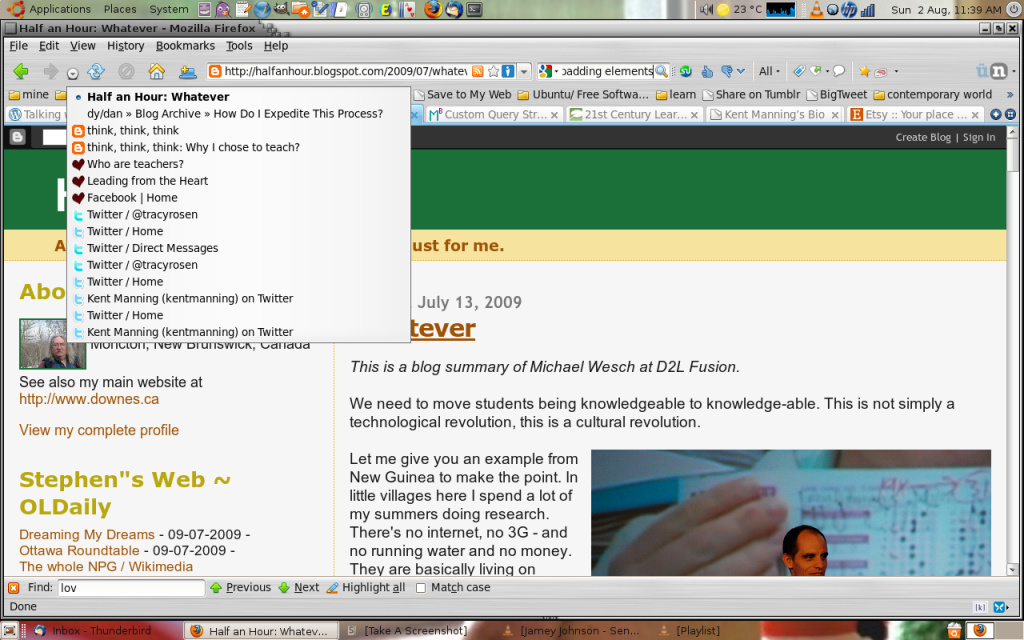I have a new blog. It’s called Teaching is a Verb and I want to collect stories about actual teaching practice there.
The long term goal of the blog is to connect teachers to teachers by providing a framework for us to visit each other’s classrooms. We have so much to learn from each other.
Anyone can register and share stories from their actual teaching practice there, or stories of teaching practice they have seen and admire.
I’ve started with my own story, and a question. I’m cross-posting it here.
What does your best teaching look like?
You know, this blog is called Teaching is a Verb yet when I answer the question I realize that examples of my ‘best’ teaching happen when I am not in the room, during those moments when I am seemingly not doing anything directly related to learning.
Example.
I spent much of one day last week, or maybe the week before, meeting with students in crises. Every once in a while we have a day like that (here’s a detailed account of one of those days from last year).
I walked into my Grade 11 CWI (Contemporary World Issues) class about 20 minutes into the period. They were quiet and had their laptops in front of them (we did a lot of fundraising last year and bought 18 mini laptops!). I figured they were taking advantage of the free time and were checking email, listening to music.
Get ready for this: they were ALL working on this assignment. I had not yet assigned it.
They went to our blog, read the new assignment, and began their research. The quiet dissipated as I walked in with, Tracy, I think I need to change my article, and Look at what I’ve found, I think there’s a connection here, can you look?, etc…
This was a class that only a week earlier had to be stopped numerous times during each period in order to regroup and address issues of silliness, noise, etc. I had taken away their seating privileges because they weren’t making smart choices in that area (sitting with friends who distract…), I spent time each class with one or another student in the den having conversations about their behaviour.
And then I realized it was about a month into the school year and that this was about the time that teaching and learning really starts.
So what does my best teaching look like? It ‘looks’ like nothing when it is happening but it is actually made up of at least a month’s worth of and ongoing consistent classroom structure, making connections with individual students, and providing them with work that they can find meaning in for themselves and create meaning from together.
The best thing about this is it eventually frees me up to work with individual students on either technical issues to do with assignments, personal issues that require some out of class intervention, comprehension issues, etc…
Here is an example of that kind of work for a course in Contemporary World Issues. It’s what they are working on right now.
Personal News Story Project
What does your best teaching look like?




